Exploring the area near Colca Canyon and the surroundings, known as the pampa of Peru is like setting off to camp on the grasslands. Be prepared to see absolutely nothing for a few days in a row.

The views are vast, the weather is harsh, and the days are long and lonely. This is a desolate region, with high elevation, cold weather and few settlements. We did find a few interesting things to report to you about, though. 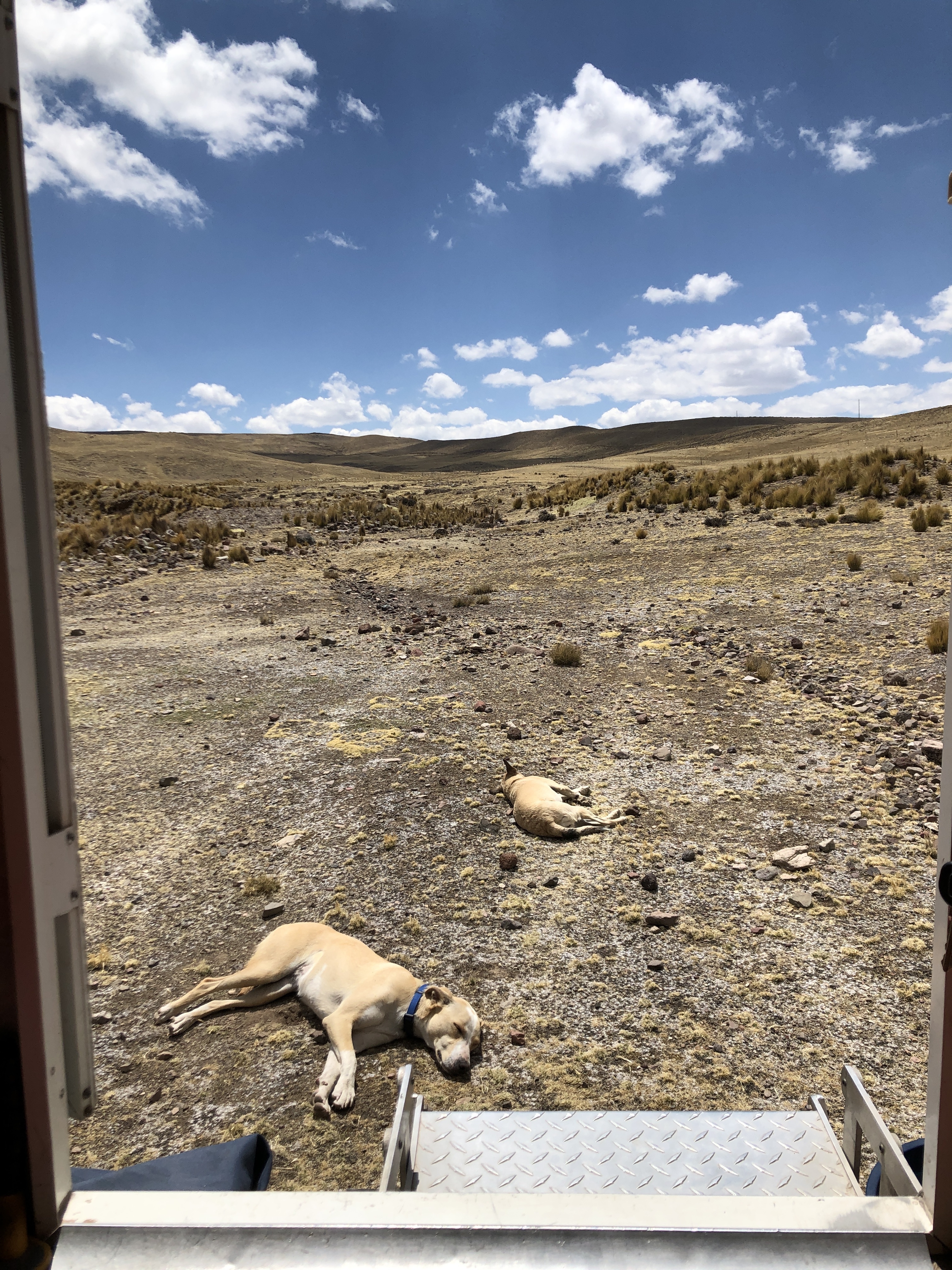
At our first campsite we found a small cow skull abandoned in a bush. With a few zip ties, it became an artifact on the front of the truck. This simple hunk of bone captures a lot of attention as we drive through cities. There is a new level of pointing and staring taking place as we pass by the curious villagers. 
We took a little detour to check out an Inca rope bridge called Queshuachaca. The location and construction methods date back to Inca times. But this particular rope bridge is is rebuilt every year by the community members. 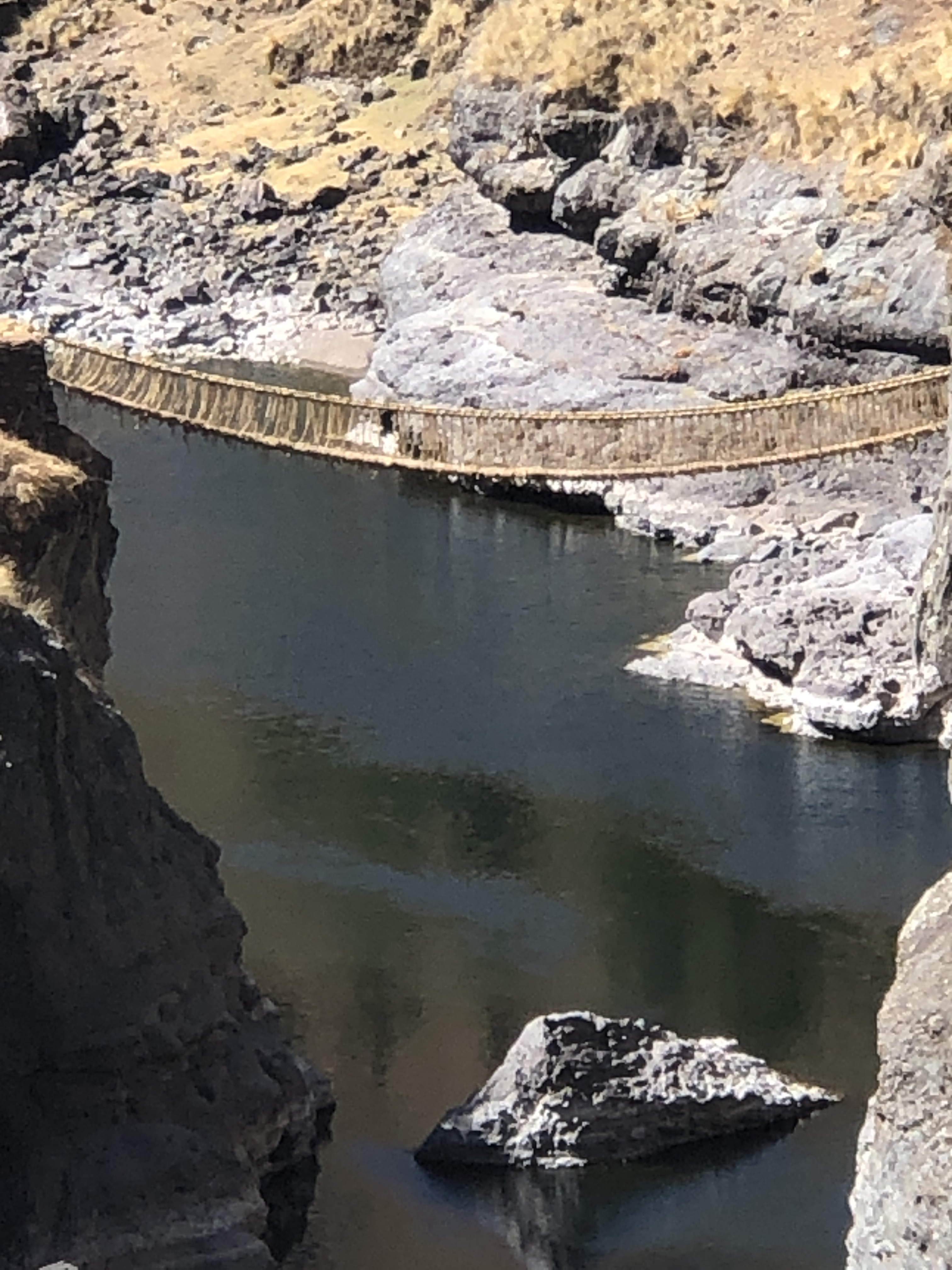
Every Spring (usually in June) the communities surrounding this passage come together for a festival of bridge making. Every family must bring about 70 feet of handmade rope to contribute to the bridge. Then the rope sections are woven together into the bridge structure and shape. Once it is prepared, the new bridge is put in place and the old bridge is cut loose and allowed to decompose in the river. This annual community celebration is recognized by UNESCO and has been taking place for countless generations.
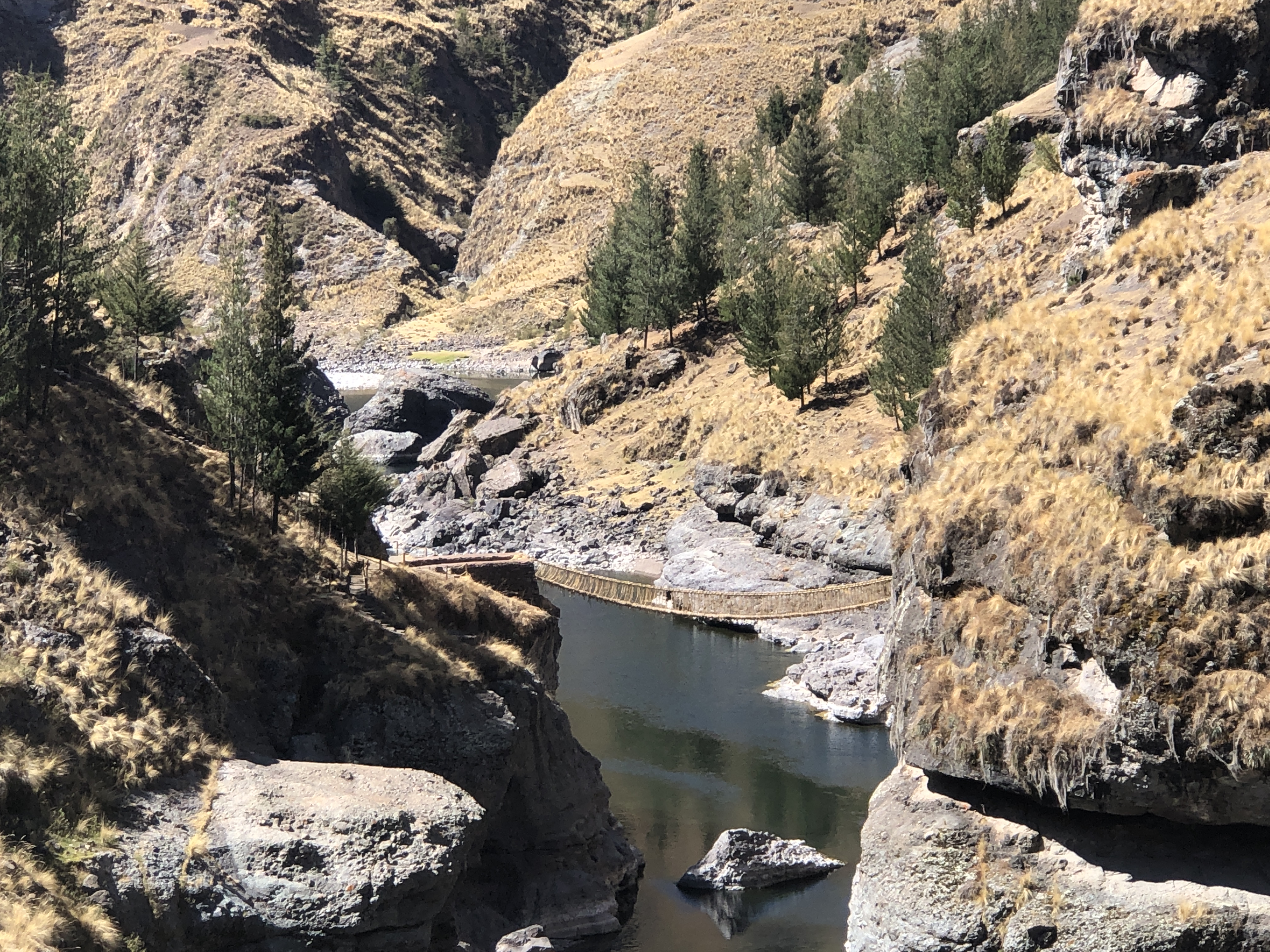


This man is demonstrating the process of making the rope for the bridge. The rope for the bridge is made by hand, using materials gathered from higher up on the pampa (grasslands). The grasses are first soaked in water. The a small pinch of fibers is placed in each hand. These are then pressed together firmly and rolled tightly between the palms. The result can be seen here.

The bridge is held in place by long, knotted sections of rope which are wedged around and under huge carved stones. This is also moved and replaced annually to insure strength and safety. 
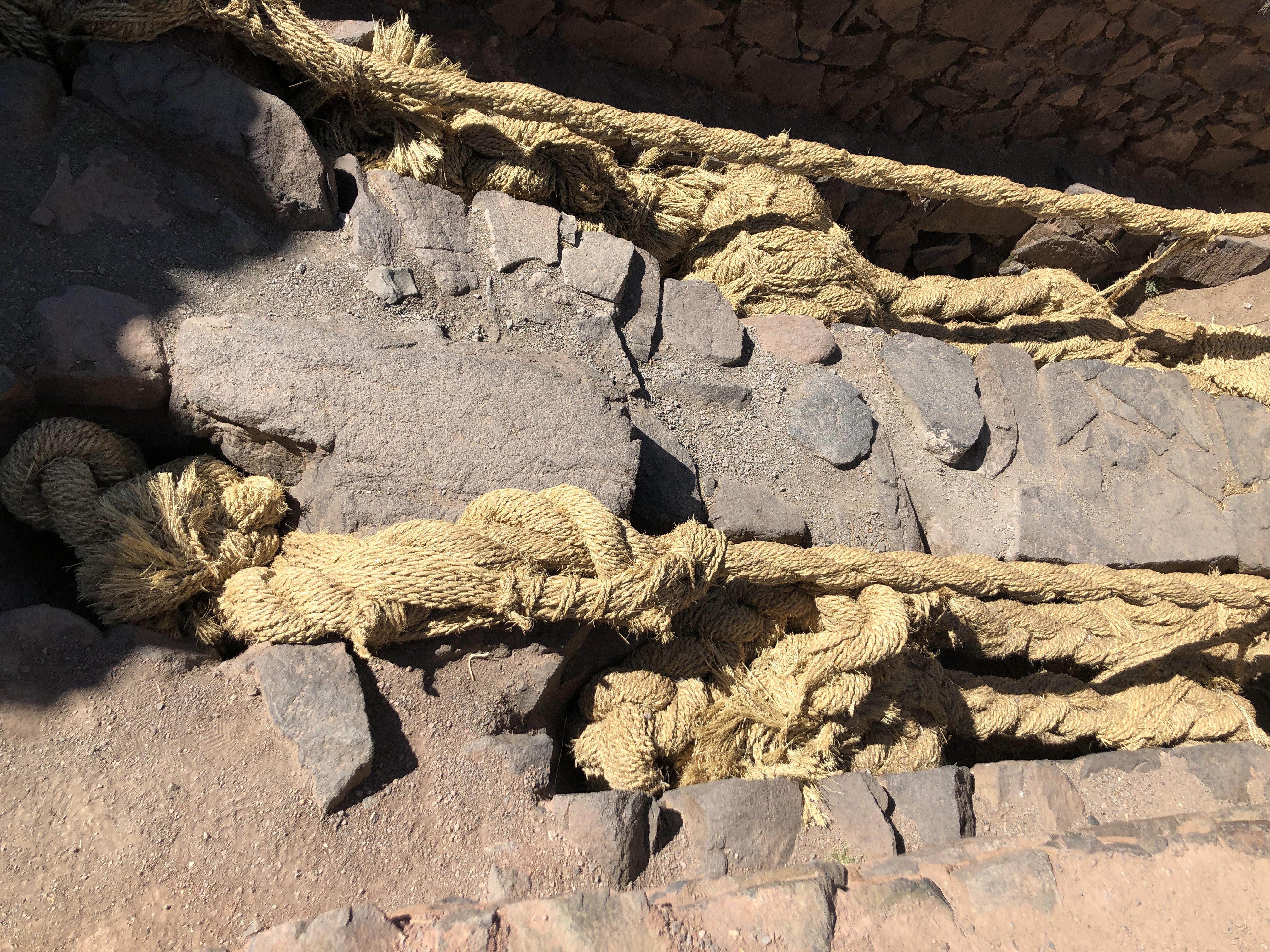 Fortunately there is a traditional metal bridge nearby for passage. As we learned, paying the fee to cross the bridge only earns one-way passage. In order to get back to our vehicle we had to walk along the cliffs of the river and walk across the “new” bridge. This provided many beautiful views of the river and the bridge as we trudged along at the high elevation.
Fortunately there is a traditional metal bridge nearby for passage. As we learned, paying the fee to cross the bridge only earns one-way passage. In order to get back to our vehicle we had to walk along the cliffs of the river and walk across the “new” bridge. This provided many beautiful views of the river and the bridge as we trudged along at the high elevation.



A few weeks ago we bought a bedspread to help manage the dog hair on our bed. But it turned out to be too large for the space up there on our bed. So we folded it up and have been carrying it for a while. While driving in this region we went through a sparsely populated area and passed a small house. This house was made of cinder blocks and had no doors or windows (at this high, cold elevation) We noticed baby clothes drying on a line in the yard. At that moment we decided that these were the folks to get that big, fluffy bedspread. I took the huge bundle, plus some coloring books, crayon and kids shoes over to the gate. The mom was sitting on the ground knitting. Nearby was a pig and twin girls playing in the dirt yard. They all eyed me suspiciously, but when I said I had a gift for her, she threw down her knitting and rushed to the gate. She was nearly crying as she looked at the stuff I was passing over the fence. 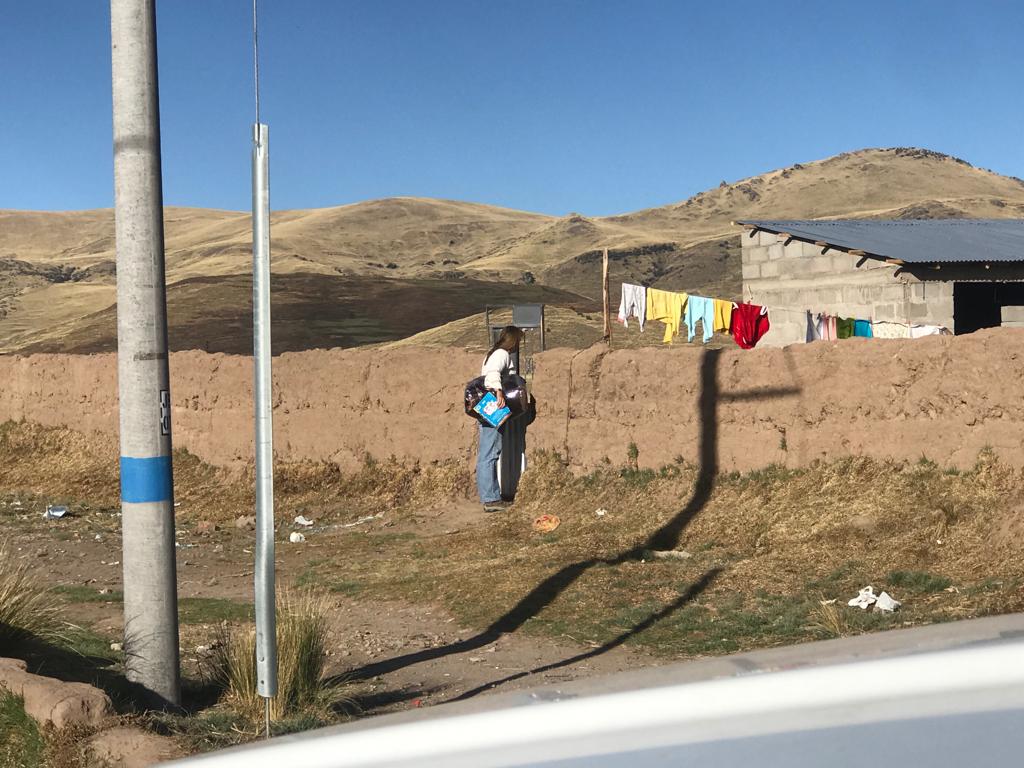
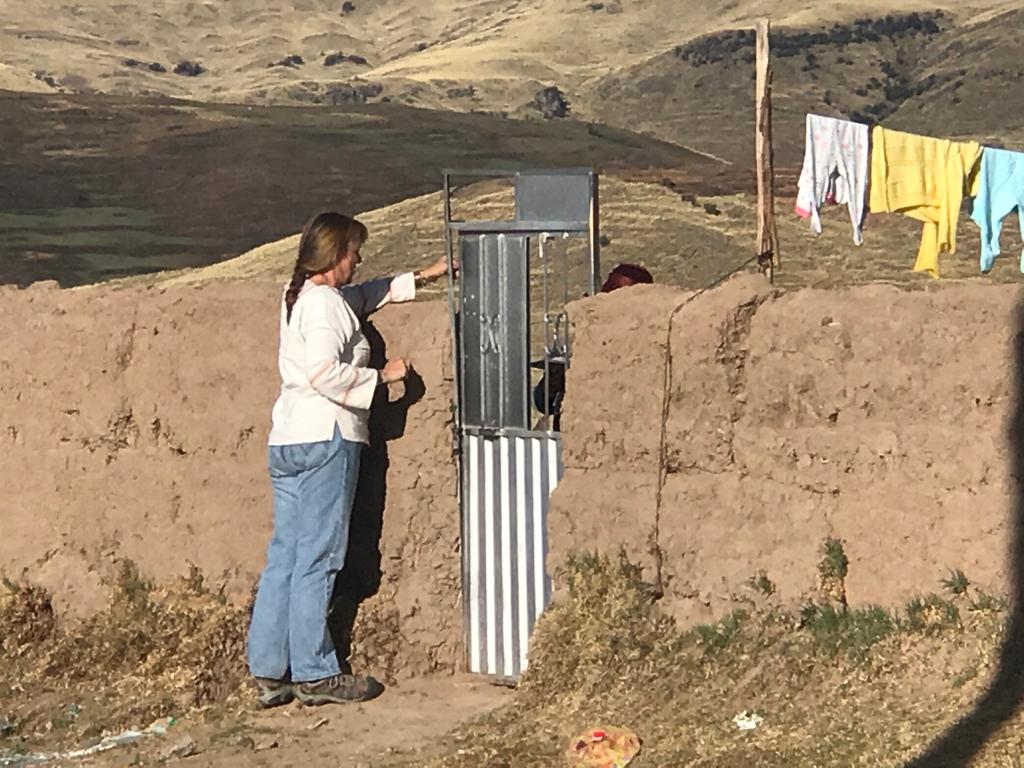 The curious neighbor lady came over to see what was going on, and they started giggling and chatting in Quechua. Clearly they were happy to receive these items, and I was glad to get them out of the truck. I often wish we had more to offer, but we do carry books and small toys to give away when the time is right.
The curious neighbor lady came over to see what was going on, and they started giggling and chatting in Quechua. Clearly they were happy to receive these items, and I was glad to get them out of the truck. I often wish we had more to offer, but we do carry books and small toys to give away when the time is right.
We stopped in a town to buy groceries, gas and dog food. Just after we parked, we heard music and turned to see a parade coming our direction. The local schools were presenting their end-of-year show in the form of a big parade.

Every grade level had learned a traditional dance and prepared colorful, elaborate costumes. It was fun to watch the dancers enjoying the celebration and the townspeople appreciating the show. The entire parade lasted nearly 30 minutes and then the streets cleared and we all went about our daily business.
 This funny photo was taken in the new archway of a small village. As you can see, the roadway is not quite complete. Most of the town was dirt and stone streets. The buildings are also constructed of stone. About half of the buildings are being lived in, and about half are abandoned. We found this little group of donkeys in the shade near some abandoned stone buildings.
This funny photo was taken in the new archway of a small village. As you can see, the roadway is not quite complete. Most of the town was dirt and stone streets. The buildings are also constructed of stone. About half of the buildings are being lived in, and about half are abandoned. We found this little group of donkeys in the shade near some abandoned stone buildings. 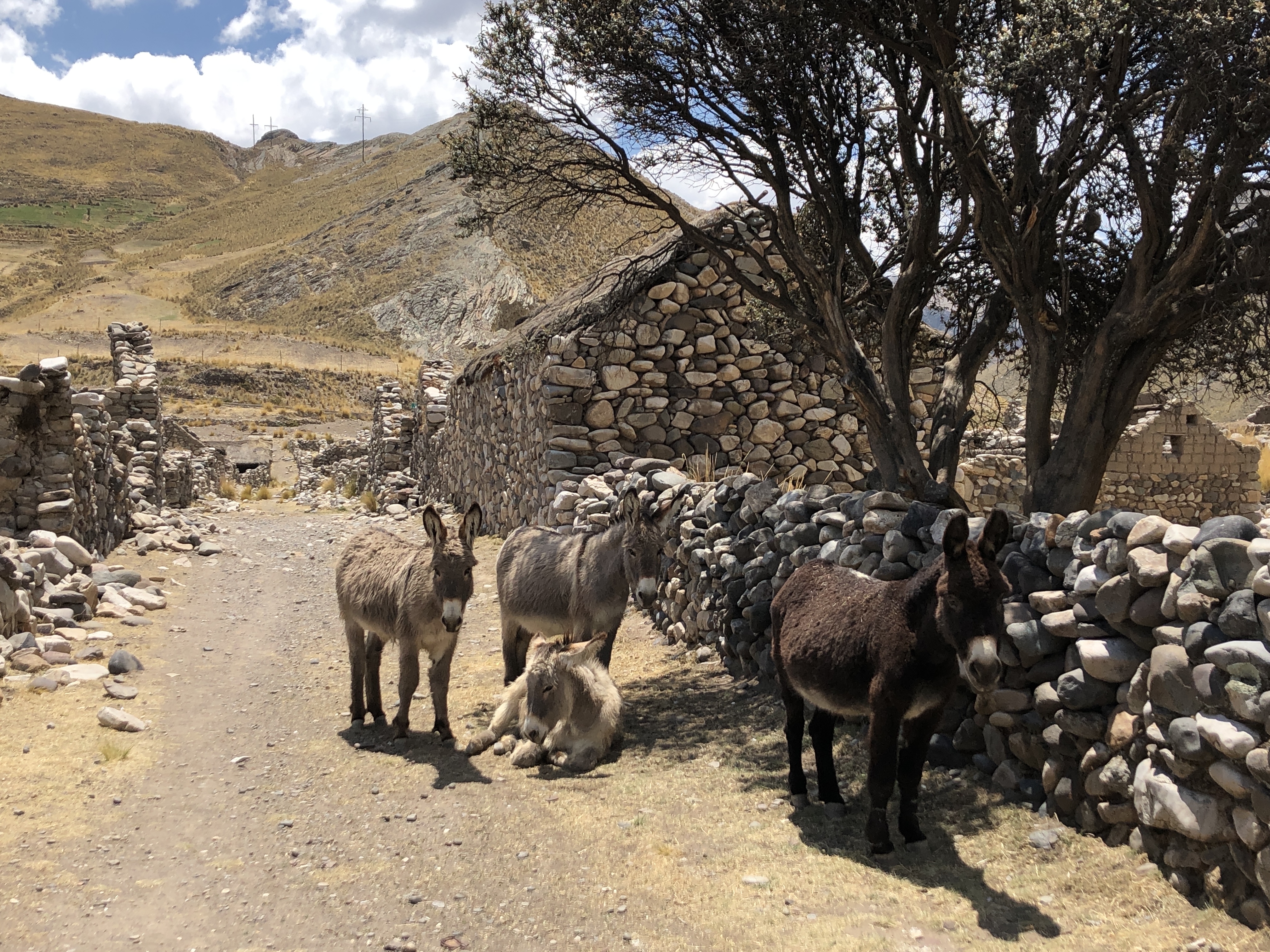
Continuing along the river on the outskirts of town we bumped and jostled along a narrow, dirt road. Finally we found him, Juanito the fisherman.  Juanito is a mummy that was entombed above a bend in the river. There are several sets of bones in these tombs.
Juanito is a mummy that was entombed above a bend in the river. There are several sets of bones in these tombs.
 However, there was no information about them or their relationship to the surroundings. Even the little visitor center seemed abandoned and lonely. But it was a beautiful and isolated resting place so Geneva and the dogs posed for a photo. ( One dog posed, the other got bored and walked away)
However, there was no information about them or their relationship to the surroundings. Even the little visitor center seemed abandoned and lonely. But it was a beautiful and isolated resting place so Geneva and the dogs posed for a photo. ( One dog posed, the other got bored and walked away) 
We found additional tombs nearby at the Tumbas Shininea.  There are literally hundreds of mud and stone constructed tombs embedded in the cliff side along this section of river. We walked across a suspension bridge and looked at the tombs from both sides.
There are literally hundreds of mud and stone constructed tombs embedded in the cliff side along this section of river. We walked across a suspension bridge and looked at the tombs from both sides.  Then we continued along the banks of the river, looking down at the steep sides.
Then we continued along the banks of the river, looking down at the steep sides.  From each angle we saw additional tombs. Sadly the remains have been robbed and all are left empty.
From each angle we saw additional tombs. Sadly the remains have been robbed and all are left empty. 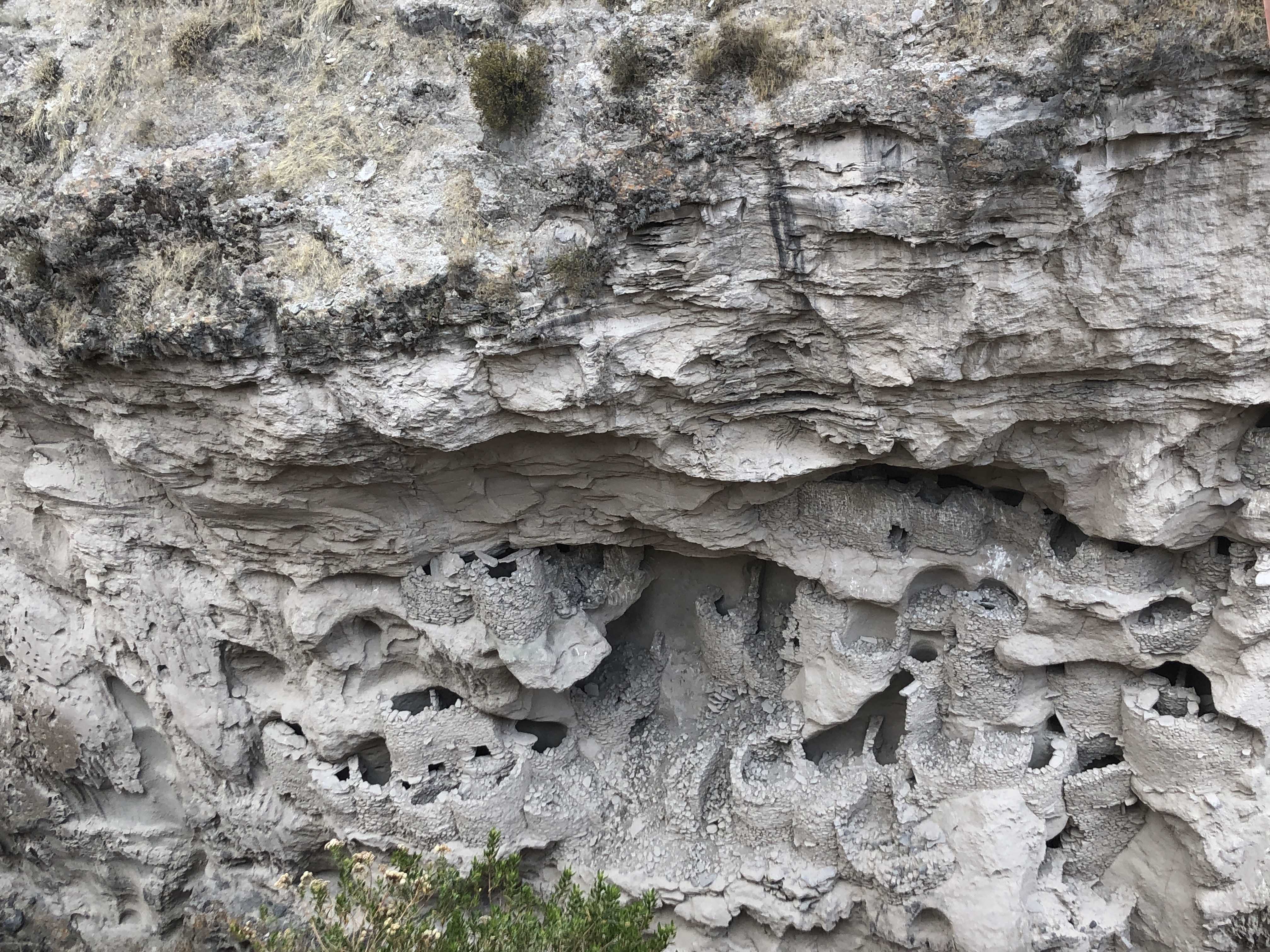
Nearby we noticed the terracing of the hillside. While terracing is still visible in most places in Peru, not all of it is still in use. 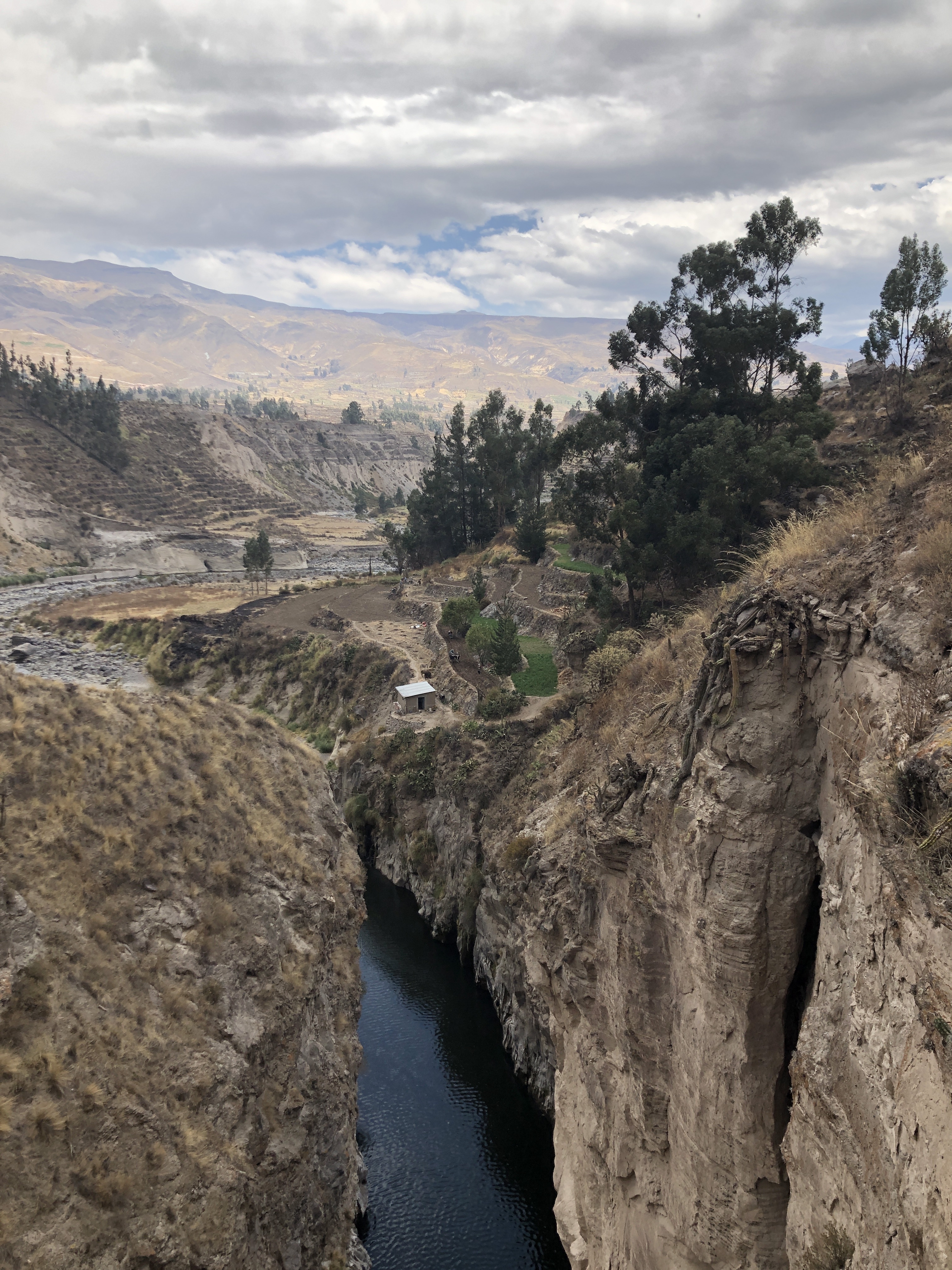 This particular location offers dark, rich soil and is still actively being farmed. These photos show farmers using animals and hard labor to make the terraces productive.
This particular location offers dark, rich soil and is still actively being farmed. These photos show farmers using animals and hard labor to make the terraces productive.
The terracing throughout the Colca Canyon area is ancient and strong. Managing the mountainsides in this way has allowed them to produce massive amounts of agricultural products to feed the huge population of the Inca empire.  Terracing also reinforces the hillsides to reduce risk of shifting and landslides during earthquakes, tremors and extreme rain. These are genuine risks for an area that exists in the shadow of a ring of huge volcanoes. Some of them can be seen when the clouds part. The terraces that you see here have been in place for over 500 years.
Terracing also reinforces the hillsides to reduce risk of shifting and landslides during earthquakes, tremors and extreme rain. These are genuine risks for an area that exists in the shadow of a ring of huge volcanoes. Some of them can be seen when the clouds part. The terraces that you see here have been in place for over 500 years.
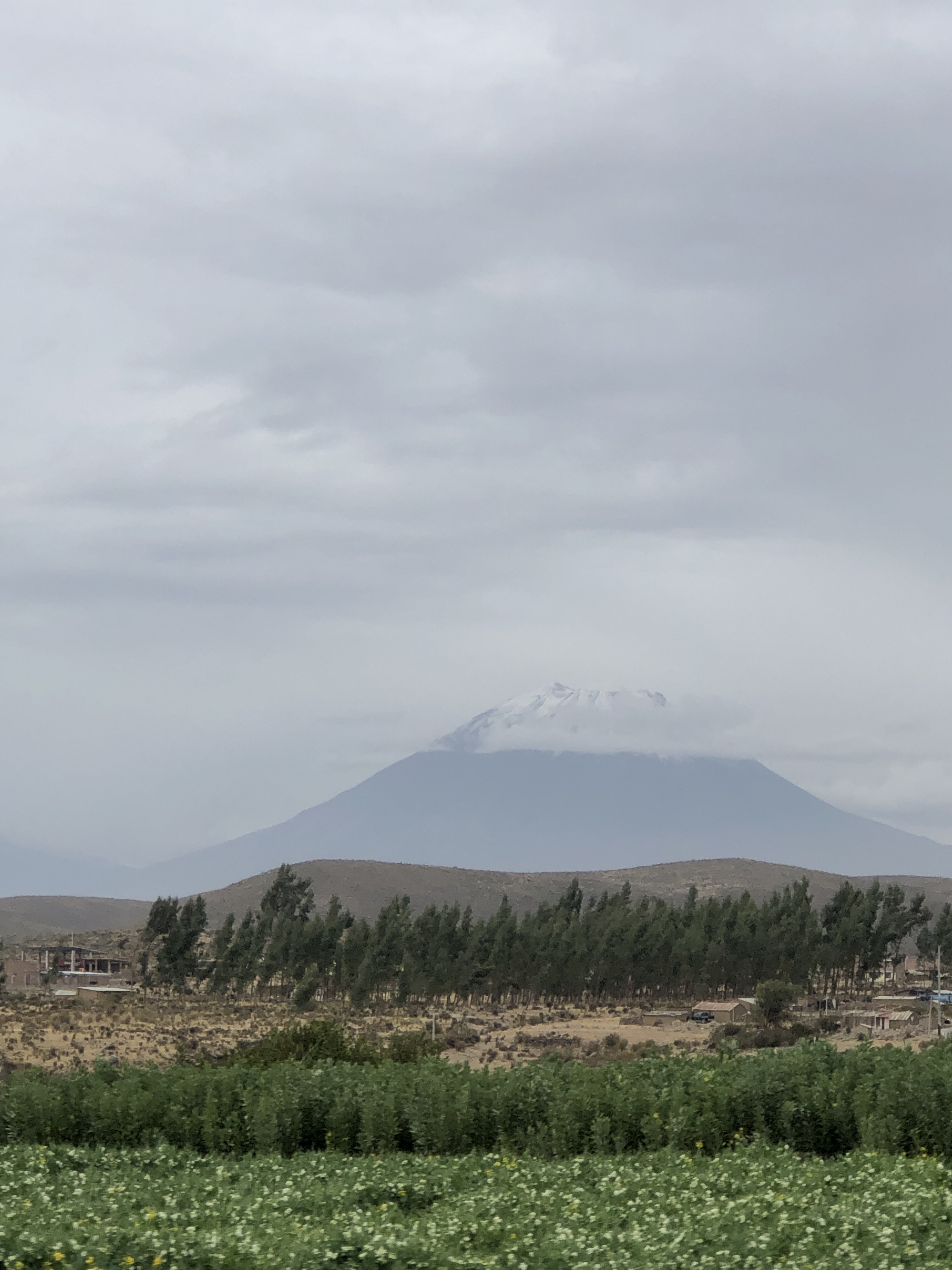
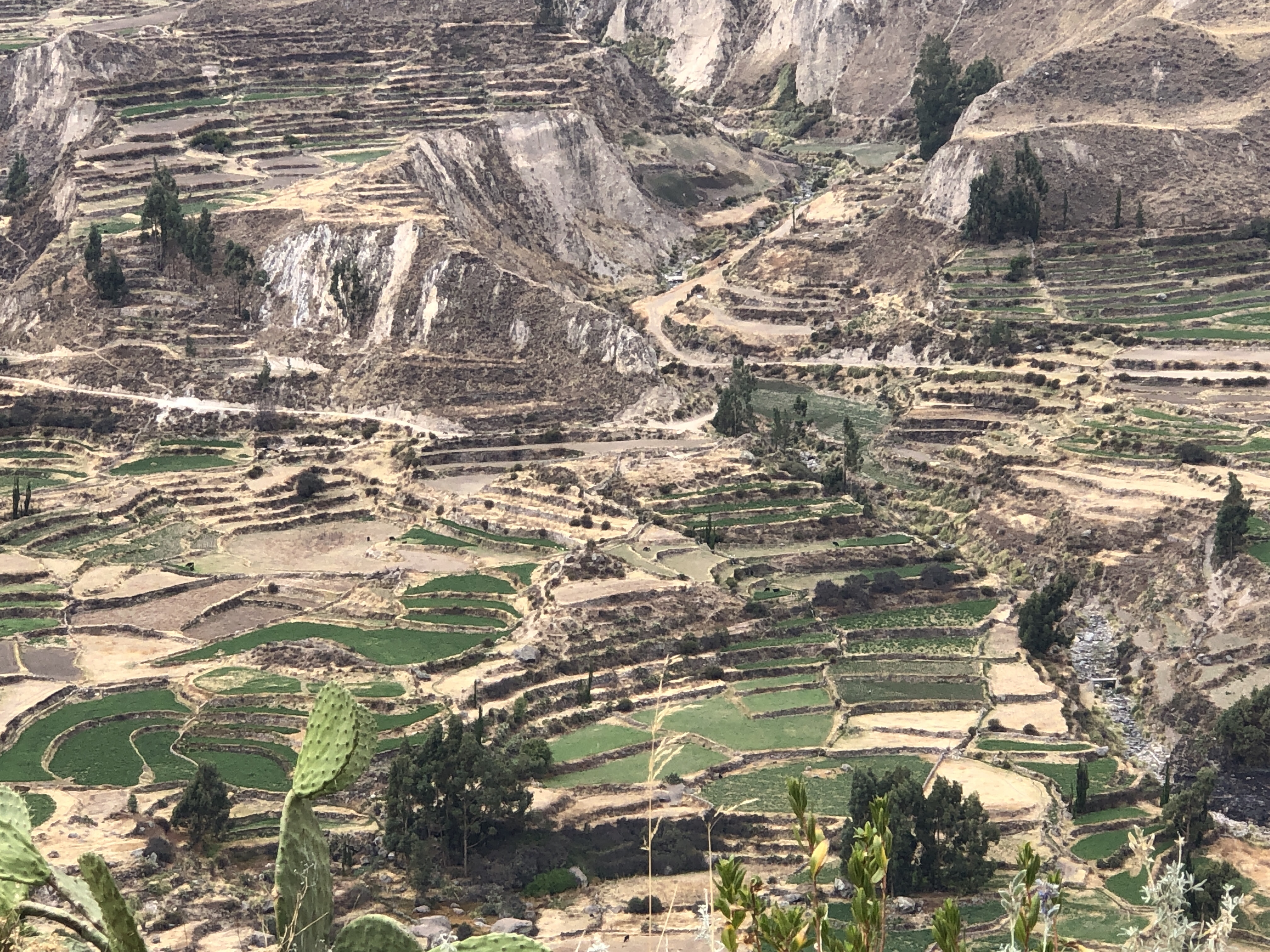
The large, desolate areas of the pampa do offer some interesting features. In one area we located a little mini-volcano. This tiny mound of spewing mud and ash is hot and a bit dangerous.  And nearby are several pools of crystal-clear, hot water. Suitable for soaking if the air wasn’t so chilly. The dogs and I decided to just look from the edge.
And nearby are several pools of crystal-clear, hot water. Suitable for soaking if the air wasn’t so chilly. The dogs and I decided to just look from the edge.
We also found amazing sunsets each night from some beautiful and peaceful campsites.
One day as we drove along we encountered a small herd of cattle walking towards us. And at the back of the herd, way out in the middle of nowhere…… a small group of authentic Peruvian gaucheros (cowboys) with their wooly horses and furry dogs.  These areas of Peru offer long views of grassy valleys and canyons. Yet in the middle of nowhere are surprises like these towering rocks, jutting out of the canyon floor.
These areas of Peru offer long views of grassy valleys and canyons. Yet in the middle of nowhere are surprises like these towering rocks, jutting out of the canyon floor.
Also while exploring in this high elevation we found a natural geyser. This powerful blow hole sprays forth an immense amount of extremely hot water.  It is located in the river bed, down in a small canyon. The sound can be heard long before the steam and spray is felt.
It is located in the river bed, down in a small canyon. The sound can be heard long before the steam and spray is felt.
But as we walked down to the riverbed, we could feel the heat in the ground, and closer to the spray we were unable to stand on the rocks due to the heat. The dogs refused to get near the edge of the canyon at all! In this video you can see the mud and hot water sputtering out of various holes. All of this additional water enters the icy cold river water and cools instantly. Every bit of water here is either too hot, or too cold to touch comfortably. Such an interesting paradox. 

At a campsite closer to an inhabited village we found an old plastic coffee mug. Inside the mug, we found this beautiful version of a black widow spider. But because we have curious dogs with us, we chose to relocate her.
Another interesting species in this area of the pampa is the Puya Raimondi. This is a yucca like plant that sends up a VERY TALL, flowering stalk. We were able to capture these images of one in full bloom. This stalk is over 12 feet tall.
As we got a little closer to civilization and small towns, we began to see more domesticated animals roaming the pampa. Llama crossing signs appear along dirt roads that see a car once or twice a day, but the crossing is very possible at any moment. 
Llama are naturally quite curious. These ones wandered surprisingly close to the camper to see what we were doing at this lake view campsite.  And here is a fun-fact for you…. vicuna families all poop and pee in the same circle. This is a photo of a vicuna bathroom circle.
And here is a fun-fact for you…. vicuna families all poop and pee in the same circle. This is a photo of a vicuna bathroom circle.  This little video clip shows a variety of animals crossing the road right in front of our truck. Just a typical traffic jam on the dirt roads of the Peruvian pampa.
This little video clip shows a variety of animals crossing the road right in front of our truck. Just a typical traffic jam on the dirt roads of the Peruvian pampa.
In the town of Lampa there is an old church. Well, in nearly every Peruvian town there is an old church! 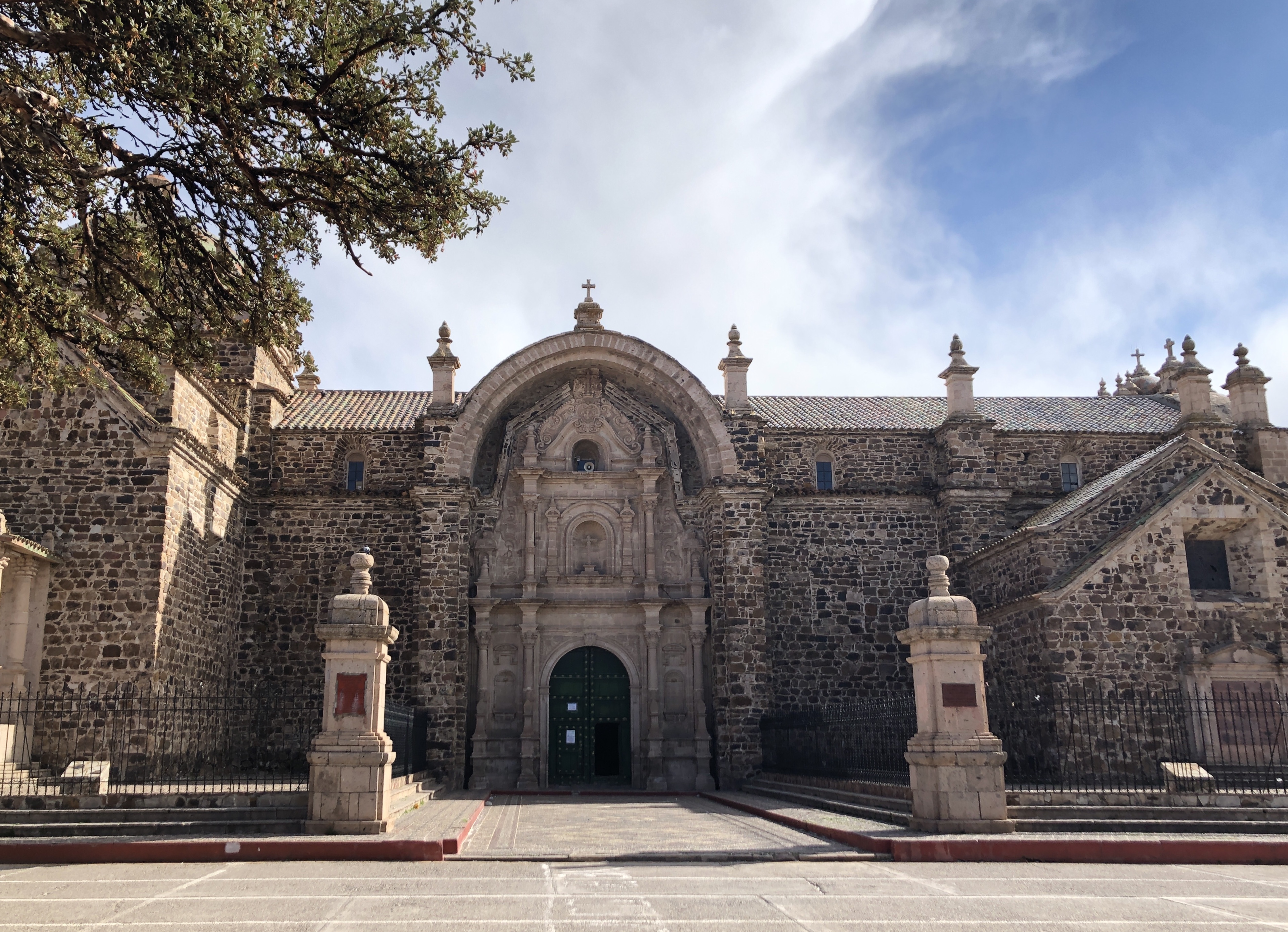 But as the story goes, this particular church needed some structural repairs. They discovered that the catacombs below the church were putting the entire structure at risk of collapse. Keeping in mind that the deceased were promised a space in the church, they transferred the skeletons to a special tomb inside the chapel. Then they reinforced the underground area to save the building. What remains is a shocking display.
But as the story goes, this particular church needed some structural repairs. They discovered that the catacombs below the church were putting the entire structure at risk of collapse. Keeping in mind that the deceased were promised a space in the church, they transferred the skeletons to a special tomb inside the chapel. Then they reinforced the underground area to save the building. What remains is a shocking display. 

And like the cherry on a sundae, there we see something special sitting on top of the marble tomb. It is an exact replica of Michelangelo’s “Piety” which was reportedly used a model to repair the original! 
 But wait, there’s more. This church also hosts one of only two known “leather Jesus” with reticulated arms. The other one is in Spain.
But wait, there’s more. This church also hosts one of only two known “leather Jesus” with reticulated arms. The other one is in Spain.  This statue is covered entirely in cow hide and has working, moveable joints at the shoulders and elbows. And to wrap up your tour of this amazing church, you get to pass through the hallway of the former catacombs. All are now filled with bricks, rocks and concrete. But it feels pretty creepy anyway!
This statue is covered entirely in cow hide and has working, moveable joints at the shoulders and elbows. And to wrap up your tour of this amazing church, you get to pass through the hallway of the former catacombs. All are now filled with bricks, rocks and concrete. But it feels pretty creepy anyway! 
After all this we returned to the truck to find this local woman enthralled with the cow skull on the front of our truck. Ironic, huh?
This wraps up our trip around the Colca Canyon area and this portion of the Peruvian pampa. Thanks for coming along with us. And remember to sign up to receive these updates in your email. We are headed to Machu Pichu soon and you don’t want to miss it. 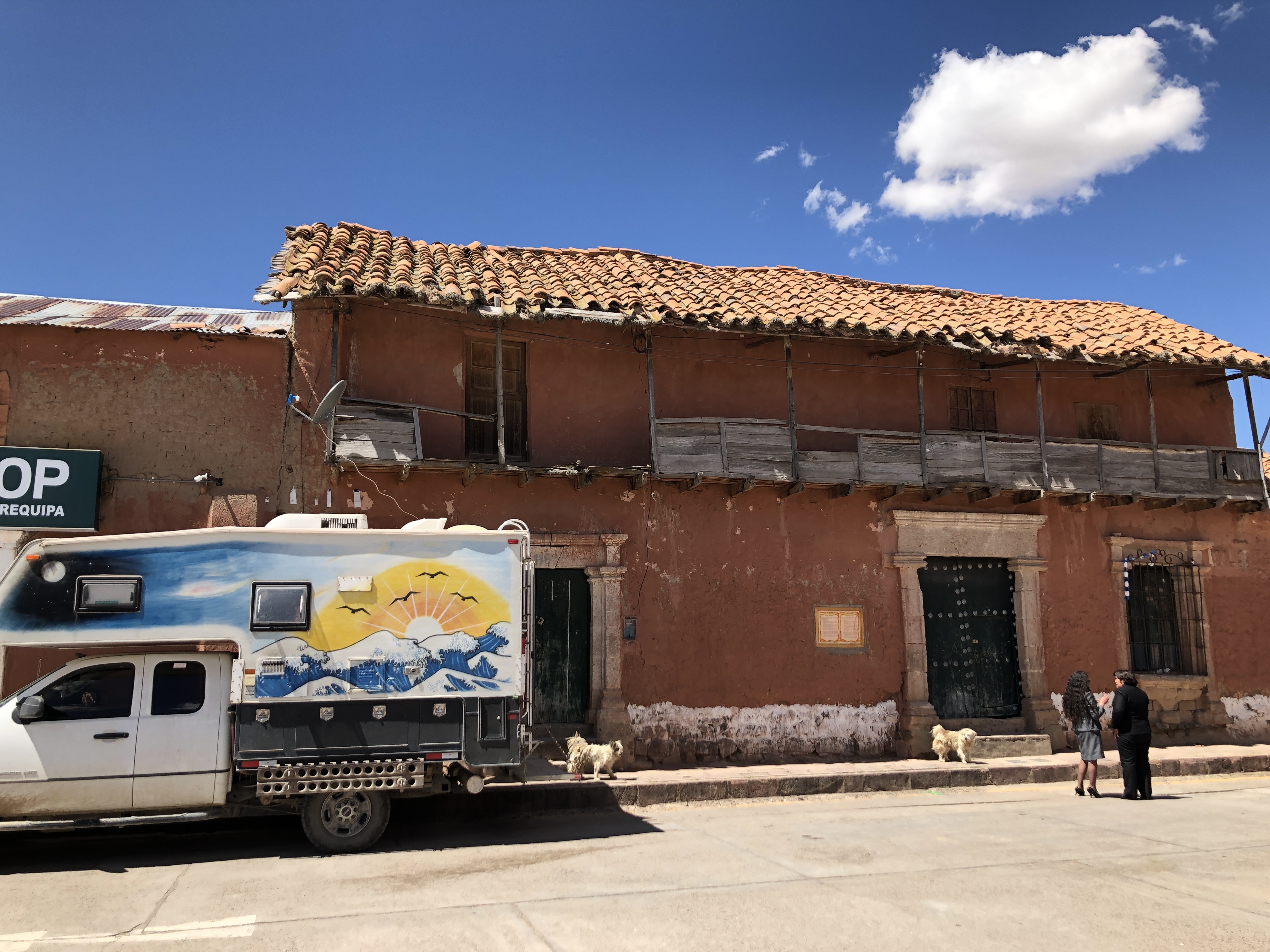
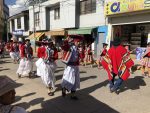

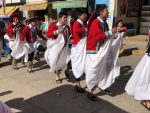









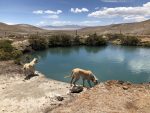
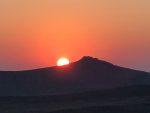


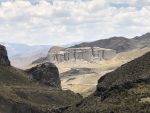
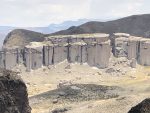



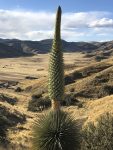
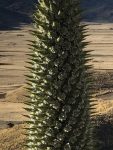


Thanks, Lopo. More to come.
We try. But we like the cities too!
Love how you’re way off the beaten track and able to step back in time. Hope Machu Picchu isn’t too much “industrial tourism” for adventurers like you to tolerate. Carry on!
Wow! I wasn’t ready for how amazing this section was! All kinds of great discoveries, including the perfect home for your blanket! 🥰 Machu Picchu will be amazing, but not the same as seeing stuff I didn’t expect! This is just the best! (And I love your pigtails! 😁)
Great pictures! Can hardly wait to see all that for ourselves 🙂